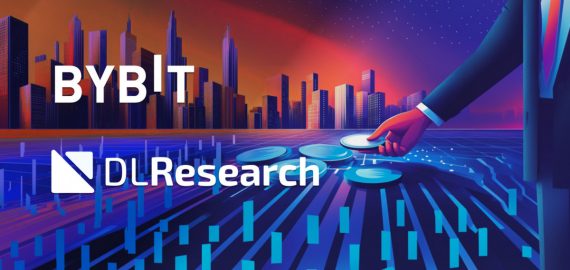How OpenAI’s Latest Model Breaks Down Barriers, Integrating Text, Audio, and Visual Inputs to Create a Seamless User Experience


In Brief
OpenAI has unveiled GPT-4o, an AI model that combines text, audio, and visual inputs and outputs into a single, coherent system.
OpenAI announced GPT-4o, an AI model that aims to transform human-computer interaction. GPT-4o, also known as the “omni” model, is a major advance in artificial intelligence capabilities that combines text, audio, and visual inputs and outputs into a single, coherent system.
Unprecedented Speed and Efficiency
The GPT-4o model is a culmination of years of research and development aimed at creating a more natural and intuitive interface between humans and machines. By accepting and generating any combination of text, audio, and images, GPT-4o breaks down the barriers that have traditionally separated these modalities, paving the way for a truly immersive and multi-dimensional AI experience.
The capacity of GPT-4o to react to audio inputs very instantly is one of its most remarkable qualities. The model can converse at a speed that is strikingly close to human-to-human communication, with a typical reaction time of only 320 milliseconds. In addition to improving the interaction’s simplicity, this reduced latency creates new opportunities for real-time translation services and AI assistants, among other apps that demand prompt replies.
GPT-4o has many improvements compared to audio functionality. The model matches the performance of its predecessor, GPT-4 Turbo, and exhibits remarkable proficiency in non-English languages, all while boasting notable advancements in text and code interpretation. This multilingualism is important because it opens up new avenues for cross-cultural cooperation and communication and makes GPT-4o available worldwide.
Multimodal Capabilities
However, the most intriguing feature of GPT-4o could be its capacity to process and provide visual data. Separating GPT-4o from other models, its innovation in vision and audio comprehension enables it to analyse and interpret photos, movies, and audio samples with previously unheard-of precision. GPT-4o’s visual skills, which range from recognising objects and emotions to producing lifelike visuals, have the potential to revolutionise a variety of areas, including education and healthcare, as well as creative industries like design and media.
GPT-4o’s end-to-end training spanning text, visual, and audio modalities is one of its main benefits. In contrast to earlier methods that used different models for every modality, GPT-4o is a single neural network that can analyse and synthesise data from several sources at once. In addition to increasing speed, this combined strategy helps the model to pick up on subtleties and contextual signals that may otherwise be missed in a fragmented pipeline.
Practical Usability and Accessibility
GPT-4o has proven to perform very well on a variety of standards, covering coding, basic logic, and multilingual tasks, according to OpenAI. In a number of assessments, such as the 0-shot COT MMLU and the M3Exam (a multilingual and visual assessment comprising problems from standardised examinations with pictures and diagrams), the model has achieved excellent scores.
OpenAI has prioritised security and moral issues in addition to GPT-4o’s unquestionably innovative potential. The multi-modal features of the model have been subjected to thorough evaluations and external red teaming in order to detect and manage any dangers. To make sure that GPT-4o complies with ethical standards and doesn’t represent a serious danger in areas like cybersecurity, persuasion, or model autonomy, OpenAI has included a number of safety interventions, such as screening training data and improving the model’s behaviour after training.
OpenAI notes that with these attempts, there are new hazards associated with the development of audio modalities that need to be carefully considered and continuously monitored. Due to this, the business is implementing the GPT-4o’s audio outputs gradually, starting with a limited range of preset sounds and abiding by current safety regulations. In a forthcoming system card, OpenAI promises to support the whole gamut of GPT-4o modalities transparently.
In addition to being innovative initially, OpenAI strategically launched GPT-4o to increase the accessibility of its state-of-the-art artificial intelligence tools to a wider range of users. The text and picture features of GPT-4o are now available to all ChatGPT users, including free tier users and Plus members with higher message allotments. Using the OpenAI API, developers may also utilise GPT-4o, which offers advantages over earlier models in terms of performance, cost, and rate limits.
As the world eagerly anticipates the full rollout of GPT-4o’s capabilities, one thing is clear: OpenAI has taken a significant step towards realising the vision of a truly multi-modal AI system that can seamlessly integrate into our daily lives. With its unprecedented capabilities in text, audio, and visual processing, GPT-4o has the potential to transform industries, enhance productivity, and unlock new frontiers in human-computer interaction. The future of AI is here, and it is one-dimensional.
The Future of Generative AI
Although the use of GenAI is not yet common, numerous experts think it can and should be utilised in the future, according to the Thomson Reuters Institute’s research. According to the research, over 25% of participants stated that their organisations were either currently utilising GenAI or had active intentions to do so. Judicial and business risk & fraud respondents were more likely to employ GenAI than tax & accounting or government respondents.
Nearly one-third of those surveyed stated that their companies were still debating whether or not to employ GenAI, which can involve using open platforms or technologies created especially for use cases in the sector on an as-needed basis. The survey also showed that a lot of service providers are still working on incorporating GenAI into their general company strategy and daily work products. Lawyers and tax experts are divided on how to handle GenAI charges and whether or not it would result in higher fees.
According to IDC projections, businesses would invest $16 billion, growing at a compound annual growth rate of 73.3%, on infrastructure, software, and services related to gen artificial intelligence by 2027. Businesses are pausing to carefully consider incorporating or reevaluating generative AI into their systems and processes in light of this expansion. Future progress will likely be a continuous process, according to Jean-Paul Paoli, Director of Generative AI Business Transformation at L’Oréal. As stated by Deloitte, corporate expenditure on generative AI is expected to increase by 30% in 2024 due to the need for more specialised and limited models that have been trained using confidential enterprise data.
The acceleration in the past two years has been staggering, and the field is expected to continue growing. Both large language models (LLMS) and small language models (SLMS) will remain relevant, with SLMS rising rapidly. LLMs might homogenise around a few big providers, such as Google, Microsoft, and Open AI, while SLMs will have a wider, unregulated array of models and open-source built-in devices.
Disclaimer
In line with the Trust Project guidelines, please note that the information provided on this page is not intended to be and should not be interpreted as legal, tax, investment, financial, or any other form of advice. It is important to only invest what you can afford to lose and to seek independent financial advice if you have any doubts. For further information, we suggest referring to the terms and conditions as well as the help and support pages provided by the issuer or advertiser. MetaversePost is committed to accurate, unbiased reporting, but market conditions are subject to change without notice.
About The Author
Victoria is a writer on a variety of technology topics including Web3.0, AI and cryptocurrencies. Her extensive experience allows her to write insightful articles for the wider audience.
More articles

Victoria is a writer on a variety of technology topics including Web3.0, AI and cryptocurrencies. Her extensive experience allows her to write insightful articles for the wider audience.

















































